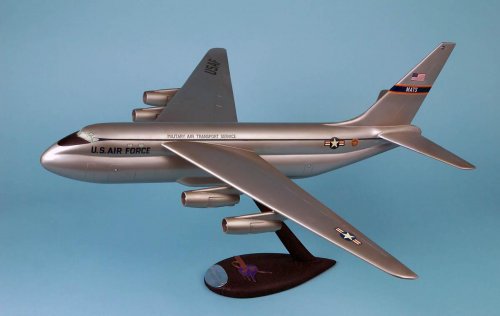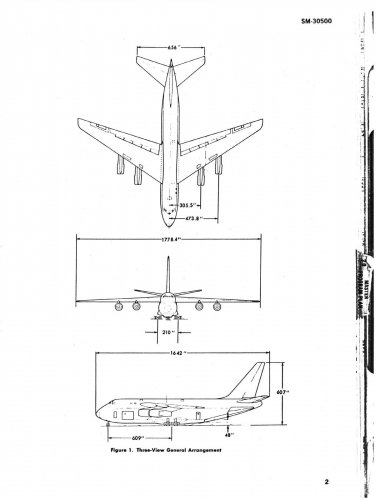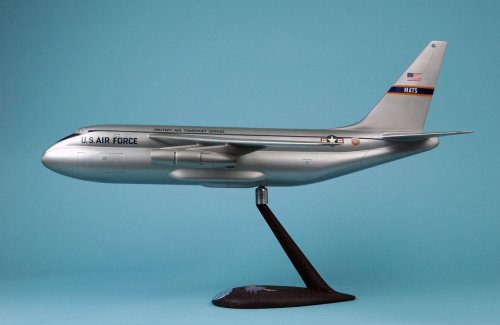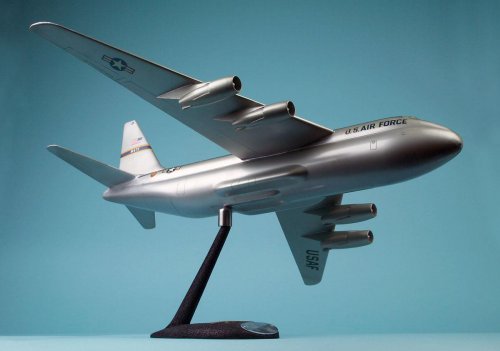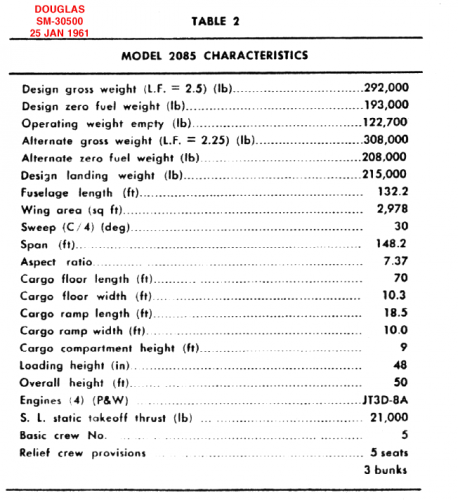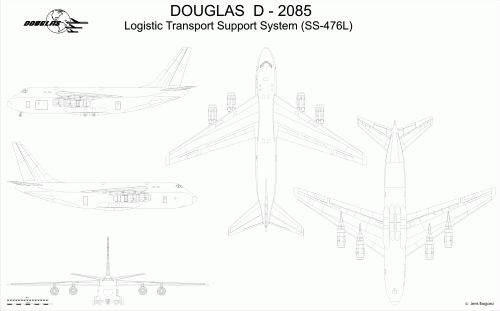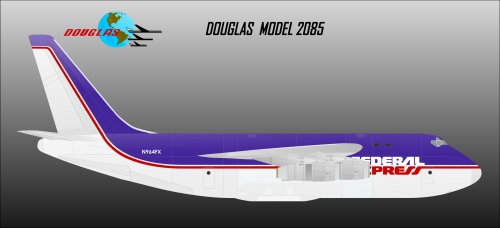- Joined
- 31 May 2009
- Messages
- 1,156
- Reaction score
- 504
Factory proposal model of the Douglas Model 2085 (Douglas Aircraft Co., Santa Monica, December 1960 / 85,000 lbs Max. Payload / 292,000 lbs GTOW). This submittal was in response to USAF RFP No. 476L for a Logistics Transport Support System.
The airplane had a rear cargo loading ramp and was (of course) also compatible with the USAF 463L Materials Handling Support System. In spite of its excellent MATS track record with the C-54, C-118, C-74, C-124 and C-133 programs, Douglas would not get any orders for the Model 2085. At the time, Douglas also fully intended to offer the Model 2085 to the civilian market (as it eventually did 35 years later with the MD-17).
18 months after the 2085, Douglas Long Beach would propose three military cargo designs, described in this topic: the D-890, D-895 and D-900.
Illustrations of the 2085 have never been published to date, to my knowledge.
The airplane had a rear cargo loading ramp and was (of course) also compatible with the USAF 463L Materials Handling Support System. In spite of its excellent MATS track record with the C-54, C-118, C-74, C-124 and C-133 programs, Douglas would not get any orders for the Model 2085. At the time, Douglas also fully intended to offer the Model 2085 to the civilian market (as it eventually did 35 years later with the MD-17).
18 months after the 2085, Douglas Long Beach would propose three military cargo designs, described in this topic: the D-890, D-895 and D-900.
Illustrations of the 2085 have never been published to date, to my knowledge.

